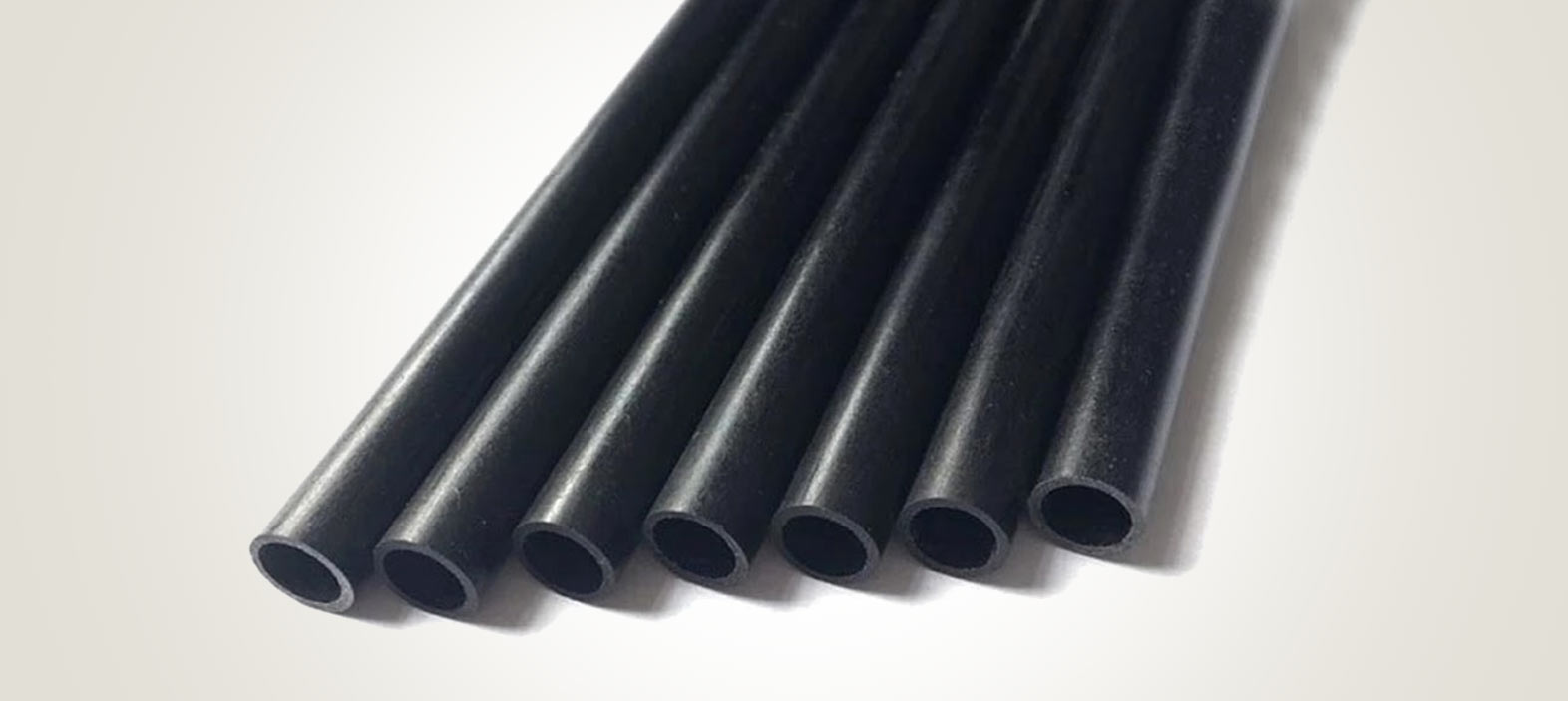
How Pultruded Carbon Fiber tubes Are Made?
👁 Reads: 235
Pultruded carbon fiber tubes are made by pulling a bundle of carbon fibers through a resin bath and then curing the composite material in a heating process. They are strong, lightweight, and dimensionally stable, making them ideal for a variety of applications, such as structural supports, sporting goods, and robotics.
The Manufacturing Process of Pultruded Carbon Fiber Tubes
The process of making pultruded carbon fiber tubes can be divided into several stages:
- Preparation of Carbon Fiber Bundle The first step in the production of pultruded carbon fiber tubes is the preparation of the carbon fiber bundle. The fibers are cut to the desired length, bundled together, and held in place by a resin matrix. The number and orientation of the fibers within the bundle can be varied to achieve the desired properties, such as strength, stiffness, and flexibility.
- Resin Impregnation Once the carbon fiber bundle has been prepared, it is immersed in a resin bath, where it is thoroughly soaked with resin. The resin used in pultrusion is typically epoxy, polyester, or vinyl ester, chosen for its compatibility with the carbon fibers, ability to cure under heat, and ability to resist moisture, UV light, and other environmental factors.
- Pulling through the Dies Next, the resin-impregnated carbon fiber rods bundle is pulled through a series of dies. The dies shape the composite material into the desired cross-section, and the speed at which the material is pulled through the dies determines its final length. The pulling process also compacts the fibers and distributes the resin evenly throughout the bundle, ensuring consistent properties and dimensional stability.
- Curing Once the composite material has been pulled through the dies, it is then cured in a heating process. The temperature, time, and pressure of the curing process can be varied to optimize the properties of the final product. The heat causes the resin to harden, bonding the carbon fibers together and creating a strong, lightweight, and dimensionally stable structure.
- Cutting to Length After the curing process, the pultruded carbon fiber tubes are cut to their final length. This is usually done using a saw or a blade, and the tubes can be cut to exact lengths to meet the specifications of a particular application.
Benefits of Pultruded Carbon Fiber Tubes
- Strength and Stiffness Pultruded carbon fiber tubes are incredibly strong and stiff, making them ideal for applications where high strength and stability are required. They are often used as structural supports, especially in the aerospace, automotive, and marine industries, where weight reduction and improved performance are critical.
- Lightweight Pultruded carbon fiber tubes are much lighter than metal tubes of equivalent strength, making them an attractive option for many applications. The use of carbon fiber tubes can result in significant weight savings, which can translate into improved performance and fuel efficiency in transportation applications and reduced loads and stress on supports and structures.
- Dimensional Stability Pultruded carbon fiber tubes are dimensionally stable, meaning that they maintain their shape and size over time and under stress. This makes them ideal for applications where consistent performance is required, such as in robotics and sporting goods.
- Customization Pultruded carbon fiber tubes can be manufactured in a variety of shapes and sizes, and the properties of the final product can be tailored to meet the requirements of a particular application. This makes pultrusion a versatile and flexible manufacturing process, and enables the creation of custom carbon fiber products to meet specific needs.
Conclusion
Pultruded carbon fiber tubes are an important component in a variety of industries and applications, offering a combination of strength, stiffness, and light weight that makes them ideal for a wide range of uses. The manufacturing process, which involves pulling a bundle of carbon fibers through a resin bath and curing the composite material in a heating process, produces tubes that are strong, stable, and dimensionally consistent. Whether they are used as structural supports in the aerospace industry, as sporting goods, or in robotics, pultruded carbon fiber tubes provide a unique combination of performance and versatility that make them an attractive option for many applications.





